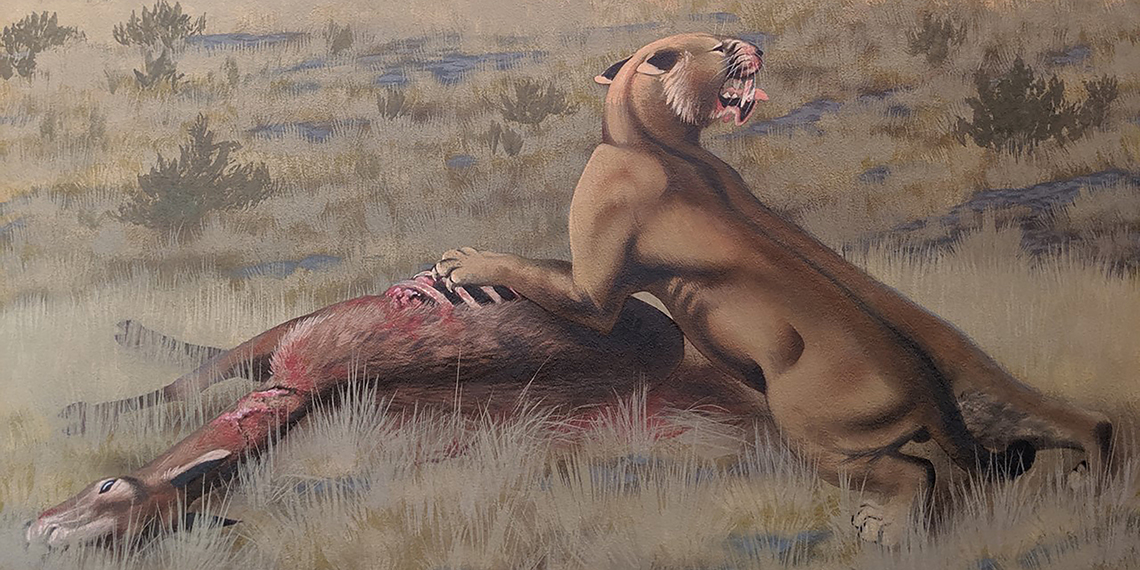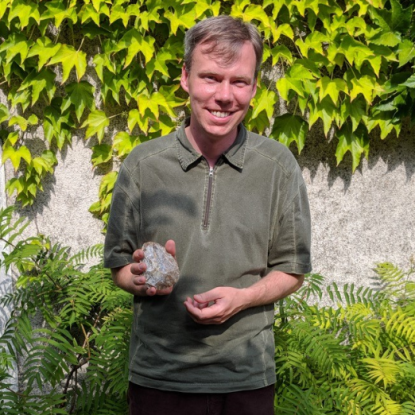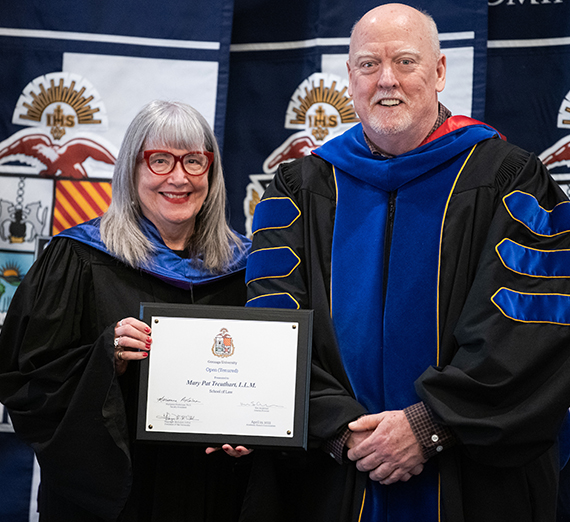Professor Orcutt Helps Identify Giant Saber-Tooth Cat
Roamed North America 5-9 Million Years Ago

SPOKANE Wash. — John Orcutt, Ph.D., Gonzaga University assistant professor of biology, has been hounded by media worldwide recently, but he’s not complaining one bit.
After all, it’s not every day a scientist discovers that a giant saber-tooth cat that lived approximately 5 million to 9 million years ago in North America, weighed on average 600 pounds and hunted prey up to 2,000 pounds.
Orcutt and Jonathan Calede, an assistant professor of evolution, ecology and organismal biology at The Ohio State University, co-authored a study published May 3 in the Journal of Mammalian Evolution.
“I am extremely proud of the research,” Orcutt said. “I’ve been working on it for so long, it’s very gratifying to see it getting all the attention it has. I’m really happy people are excited about it. It can get exhausting at times. But I also will happily talk about this cat for hours. So, all the interviews have been not too much of a hardship.”
Orcutt, who initiated the project, traces its beginnings to 2008, when he was earning a doctorate in geological sciences at the University of Oregon, and was working for the UO Museum of Natural and Cultural History.
“Basically, we were just going through the drawers, the cabinets of the fossils in the basement and opening up each drawer and sort of saying, ‘this is what’s in here and where it’s from’ clerical work. And we open this one drawer and there was this huge ulna (upper arm bone),” Orcutt said.
While it was originally labeled a cat bone, Orcutt’s initial thought was the bone was too large to belong to a cat. He thought it could have belonged to a rhino or a bear, but the arms were not quite the right shape for either animal.
As a student, he was unable to dedicate his time fully to the research, so he kept the investigation on the backburner and returned to it as time allowed.
“I would just keep an eye out for any big cat bones. And they turned up from time to time at a few different places. University of California, University of Texas, Idaho State, all had what turned out to be things that we were able to assign to the species,” he said.
After many years, Orcutt teamed up with Calede, an expert in geometric morphometrics and a fellow UO alumnus. Along the way, they discovered a humerus — a bone of the upper arm — that perfectly fit the ulna that Orcutt had found.
Calede’s ability to use morphometrics to compare different species of bones in a quantitative way allowed them to draw conclusions on this big cat. They discovered the bones were of an outlier cat — its own species of saber-tooth cat, and an ancient relative of the best-known saber-toothed cat Smilodon, which went extinct some 10,000 years ago.
The Oregon specimen was excavated on the traditional lands of the Cayuse, a tribe joined with the Umatilla and Walla Walla in the Confederated Tribes of the Umatilla Indian Reservation. After the discovery Calede and Orcutt collaborated with Tamástslikt Cultural Institute to name the new species Machairodus lahayishupup. Machairodus is a genus of large saber-toothed cats that lived in Africa, Eurasia and North America; in the Old Cayuse language, Laháyis Húpup means “ancient wild cat.”
Orcutt said he is grateful for the opportunities and support Gonzaga has provided to advance this research — noting the Pacific Northwest is an ideal region for fossil discovery. He also cites the participation of Gonzaga students as a major factor in developing this study.
“Gonzaga has been great for several reasons. First, the fact that there is such a strong emphasis on building up student-driven research programs,” said Orcutt said. “Having that kind of institutional focus and having the ability to not only put together a lab program that can find more bits and pieces of this, but they can generate other interesting paleobiological questions that we can address.”
The research also was supported by the M.J. Murdock Charitable Trust and Ohio State.
Orcutt has several students involved in this project and is looking to expand the research in the future — investigating more fossils that may be associated with this animal. This summer he plans to return to the site where the humerus was discovered.
“Hopefully, one of these days, we’ll actually find a skull to go with it. That’d be nice.”
- Academics
- College of Arts & Sciences
- Academic Vice President
- Biology
- News Center




